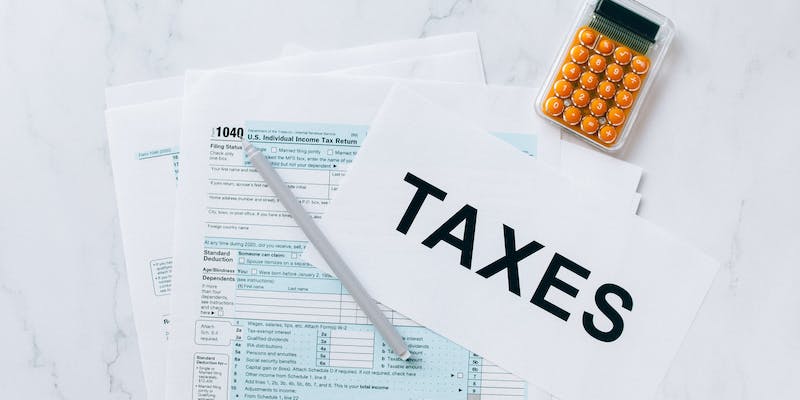Are you ready to make sense of Income Tax Deductions for the tax year? It may sound a bit daunting, but fear not! We're here to simplify the process for you. In this article, we'll walk you through the basics of Income Tax Deductions, demystify some common misconceptions, and help you understand how they can work in your favor.
Deduction Categories
To break it down, let's discuss some key categories of Deductions and how they work:
Standard Deduction
The Standard Deduction is a set amount that reduces your taxable income. For many taxpayers, this is a straightforward and hassle-free option. As of my last knowledge update in 2022, here are the Standard Deduction amounts for different filing statuses:
- Single: $12,550
- Head of Household: $18,800
- Married Filing Jointly: $25,100
- Married Filing Separately: $12,550
It's important to note that these amounts can change from year to year, so make sure to check the current figures when filing your taxes.
Itemized Deductions
Itemized Deductions are specific expenses that you can enumerate individually. These include medical expenses, state and local taxes, mortgage interest, charitable contributions, job-related expenses, and educational expenses.
Donations to qualified charitable organizations can be deducted, but there are rules and limits, so proper documentation for these contributions is necessary. Some job-related expenses, such as unreimbursed employee expenses and job search costs, may be eligible for Deductions.
Above-the-Line Deductions
Above-the-line Deductions are adjustments made to your income before calculating your AGI. These Deductions can be claimed even if you don't itemize. Some common above-the-line Deductions include:
Student Loan Interest: You can deduct up to $2,500 of student loan interest, subject to income limits.
Educator Expenses: If you're a teacher, you can deduct up to $250 for classroom supplies and materials.
Alimony Payments: If you're making alimony payments, you may be able to deduct them.
These are just a few examples, and there are more above-the-line Deductions you might qualify for, so it's worth checking the IRS guidelines.
Key Deductions to Maximize Savings
Now that you understand the various deduction categories let's delve into some key Deductions that can help you maximize your savings during the tax year.
Home Mortgage Interest
If you're a homeowner with a mortgage, you can often deduct the interest you pay on your loan. This can amount to significant savings, especially in the early years of your mortgage when most of your payments go toward interest.
Charitable Contributions
Donating to qualified charitable organizations not only benefits those in need but also can lower your taxable income. Be sure to keep records of your contributions and understand the limits and guidelines for claiming these Deductions.
Education-Related Deductions
If you're pursuing higher education or have student loans, there are Deductions available. The Student Loan Interest Deduction and the Lifetime Learning Credit are examples of Deductions that can ease the financial burden of education.

Common Misconceptions about Income Tax Deductions
Now that we've covered the basics and some key Deductions let's address some common misconceptions about Income Tax Deductions. Clearing up these myths can help you make informed decisions when filing your taxes.
"I Should Always Itemize to Get the Most Deductions."
This is not necessarily true. While itemizing can result in more Deductions if your eligible expenses exceed the Standard Deduction, it doesn't make financial sense if your expenses are lower. Always calculate both options and choose the one that benefits you the most.
"All Donations Are Tax-Deductible."
Not all donations are tax-deductible. To qualify for a deduction, your donation must go to a qualified charitable organization. Additionally, there may be limits on how much you can deduct based on your income.
"I Can Deduct All My Home Mortgage Payments."
You can only deduct the interest portion of your home mortgage payments, not the entire payment. This distinction is crucial, as it impacts the potential savings.
"I Don't Need to Keep Receipts for Small Expenses."
Even small expenses can add up, so it's a good practice to keep receipts for all potential Deductions. You never know when they might come in handy during tax season.
How to Claim Income Tax Deductions
Claiming Income Tax Deductions may sound like a tedious task, but it's manageable with the right approach. Here's a step-by-step guide on how to claim Deductions for the tax year:

Determine Your Filing Status
Your filing status (e.g., single, married, head of household) affects the Standard Deduction amount you can claim. Make sure you choose the correct status when filing your taxes.
Gather Documentation
Collect all relevant documentation to support your Deductions. This includes receipts, invoices, donation records, and any other evidence of your expenses.
File Your Taxes
File your taxes either electronically or by mail, depending on your preference. Keep copies of all your tax-related documents for your records.
Review and Double-Check
Before submitting your tax return, carefully review all the information to ensure accuracy. Double-check your calculations and verify that you've claimed all eligible Deductions.
Submit Your Tax Return
Once you're satisfied that everything is in order, submit your tax return. If you're eligible for a tax refund, it will be processed, and you'll receive your money.
Conclusion
Income Tax Deductions for the tax year are an essential part of managing your finances and ensuring you don't pay more in taxes than necessary. While the world of tax Deductions can seem overwhelming, it's not as complex as it might appear.
By understanding the categories of Deductions, key Deductions to maximize savings and common misconceptions, you're well on your way to making informed decisions when filing your taxes.
So, gather your documentation, stay organized, and consider seeking professional advice when needed. By following these steps and tips, you can navigate the world of Income Tax Deductions with confidence and ease.



